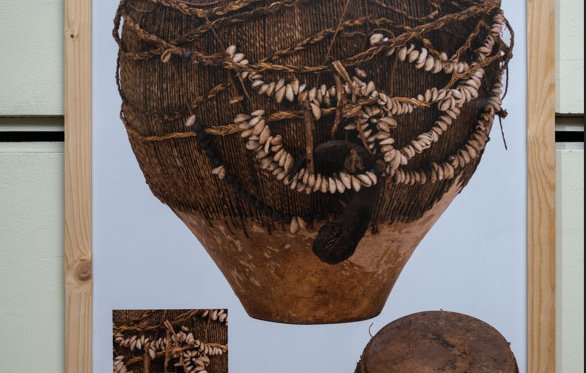Kampala, Uganda | The conversation around cultural restitution in Uganda has resurfaced, highlighting the importance of reclaiming heritage, identity, and dignity. Restitution is not new to the country’s history: in 1961, ahead of Uganda’s independence, Abubaker Mayanja, then Minister of Education in the Buganda government, successfully requested the return of the Kibuuka Omubaale artifact from the University of Cambridge. This spiritual object, representing the god of war Kibuuka, played a pivotal role in Buganda’s victories during Kabaka Nakibinge’s reign and now resides at the Uganda Museum.
While this earlier return was largely unknown outside certain circles, it was significant in restoring cultural pride and opening conversations about numerous Ugandan artifacts taken abroad, often during colonial times. The debate has only intensified in recent years as African nations push for the return of cultural treasures held in Western museums.
Last year, Uganda received 39 restored objects, some of which are now on display at Nommo Gallery under the theme Ethics of Loaning. The photo exhibition seeks to strengthen dialogue on restitution while celebrating Uganda’s diverse cultural heritage. Featured pieces include the Etok headdress from Acholi, crafted from human hair and adorned with beads and ostrich feathers; a royal drum from Buganda decorated with cowrie shells and beadwork; a Queen Mother’s drum from Bunyoro; and a ceremonial ram horn.
These objects highlight the artisanal skill and symbolic significance of Uganda’s communities. For example, the Etok’s ostrich feather underscores Acholi reverence for leadership and continuity. Similarly, the intricate beadwork and cowrie shells on royal drums reflect the spiritual and political authority of their respective communities.
However, the exhibition has faced criticism for some misrepresentations, including an inaccurate description of the Enjjembe spiritual medium. Critics argue that such errors reflect broader gaps in African cultural institutions’ research and reliance on Western studies, which sometimes undermines the authenticity and significance of these artifacts. These oversights feed into the Western narrative that Africa may not yet be ready for permanent restitution of its cultural heritage.
Despite these challenges, Ethics of Loaning contributes significantly to restoring Uganda’s cultural memory and identity. The exhibition engages viewers through realistic visual displays, prompting reflection on personal and communal cultural connections. Beyond a showcase of artifacts, it sparks meaningful conversations about heritage in an era of globalization, reminding audiences of the importance of preserving and reclaiming cultural identity in a rapidly changing world.
